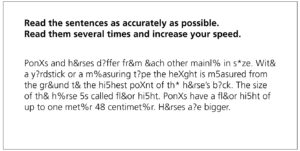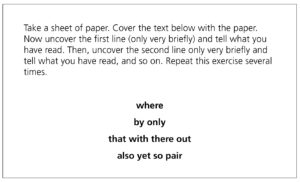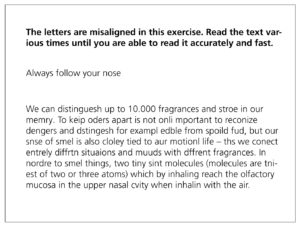Procedure:
The goal of a mostly automatic identification of particularly frequent word images can be approached with different exercises. Examples:
- Reading words with obstacles (see exercise a below).
- Recognizing frequent mini words immediately (see exercise b below).
- Reading words with mis-aligned letters (see exercise c below).
- Finding rhyming words for frequent words (house – mouse – louse…).
- In a text taken from a newspaper article or a story, find frequently used words and highlight them in colors (e. g. “much or many”, “very”, “maybe”, or other, frequently repeated words in this text).
- Connecting words: the students receive a worksheet with word pairs that belong together, but are writtten separately and jumbled up.
They must connect with arrows the words that belong together
(e. g. mechanic – wrench; dog – barking, etc.).
Remarks:
- Many exercises are also ideal for working in pairs.
- Many of the required worksheets for this kind of exercise can be prepared by older students for the younger ones.
- These kinds of exercises can of course also be conducted with older students if they still experience difficulties with word recognition in their first language.
Exercise a)

Exercise b)

Exercise c)







